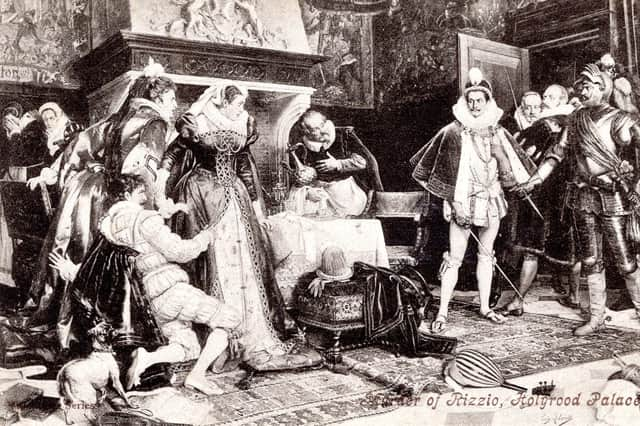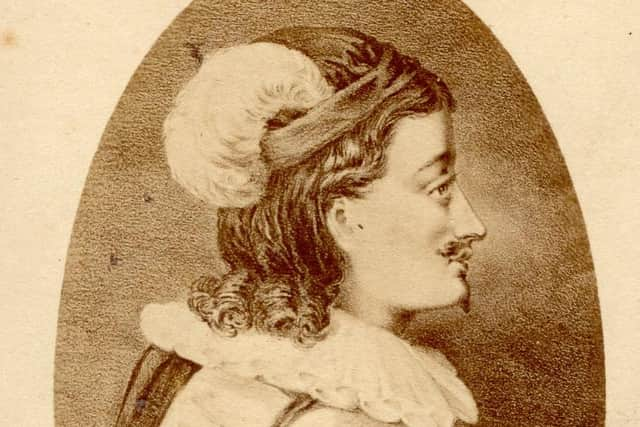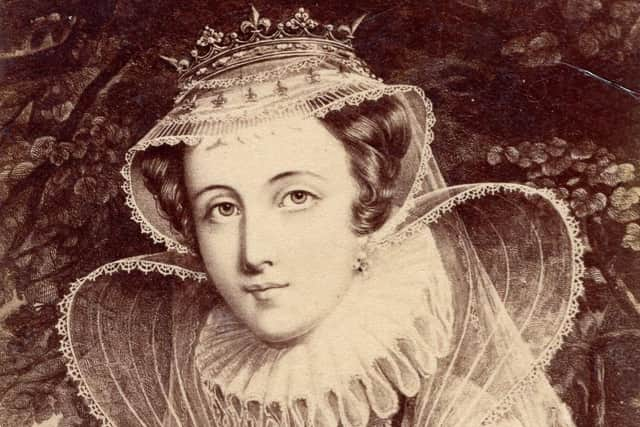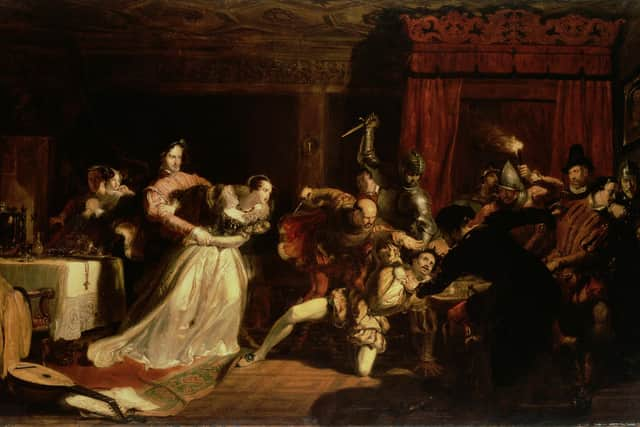Unsolved Edinburgh mysteries: The whereabouts of Rizzio’s grave


Having become deeply unpopular with the Scottish nobles, a party of conspirators forced their way into Holyrood, led by Lord Ruthven and Mary’s husband Henry Lord Darnley. They entered Mary’s private apartments, where she was having a meal with her closest confidantes, held her at gunpoint and waved daggers in her face. The craven Rizzio cowered behind her, but the murderous throng seized hold of him with a hearty goodwill, wrenched his fingers away from the Queen’s skirts, and dragged him out into the ante-room, where they murdered him with 56 stab wounds.One of the great unsolved mysteries of Edinburgh is where David Rizzio was buried.
We know his mutilated corpse was thrown out through the window into the courtyard, carried into the porter’s lodge, and later buried by the door to Holyrood Abbey. But according to the old chronicler George Buchanan, Mary had him disinterred and reburied in one of the royal tombs, containing the remains of her father James V and his family:
Advertisement
Hide AdAdvertisement
Hide Ad'Her first proceeding was to cause David’s body, which had been buried before the neighbouring church door, to be removed in the night, and placed in the tomb of the late king and his children, which alone, with a few unaccountable transactions, gave rise to strange observations; for what stronger confession of adultery could she make, than she should equal to her father and brothers in his last honours, a base born reptile, neither liberally educated, nor distinguished by any public service, and what was still more detestable that she should place the miscreant almost in the very embrace of Magdalene of Vallois, the late queen.’


On the other hand, there has long been a tradition at Holyrood that Rizzio was buried there, in an unmarked grave in the Abbey grounds.
Thirdly, the east wall of Canongate Kirk has a plaque above a worn old gravestone, saying that this was the grave of David Rizzio, transported here from Holyrood, presumably in 1688; this version of events has gained widespread credence on the Internet, and was accepted by Rizzio’s biographer Mr David Tweedie.However, I found a memorandum by a certain Doctor Sibbald, saying that when the vault was discovered and searched in 1688, in contained only the royal corpses of King James, Queen Magdalene, Lord Darnley, the Countess of Argyll and the King’s two sons, all in good order. There was no trace of David Rizzio.
Furthermore, Bishop Lesly [an adviser of Mary Stuart] said that in spite of Buchanan’s exhortations, there was evidence Rizzio had been buried 'in the Porch of the Abbey Church'.
Advertisement
Hide AdAdvertisement
Hide AdThe original statement as to the disposal of Rizzio’s remains, by the French Ambassador Paul de Foix, merely says that he was given a ‘honourable burial in the [Holyrood] church, like if he had been a royal personage’. A series of letters from Sir William Drury agree that Rizzio was buried in another part of the church, and not in the royal tomb. With this evidence at hand, I would treat Buchanan’s version of the story as a falsification intended as a slur on Mary: there is good evidence that Rizzio was not buried in the royal tomb, and it would of course have been entirely out of character for Mary to have the low-born Rizzio buried in the tomb of her noble ancestors.The plaque on the east wall of the Canongate Kirk in Edinburgh’s Royal Mile, above a very worn old gravestone, proclaims that according to tradition, this is the grave of David Rizzio, transported here from Holyrood. It seems highly adventurous to count Rizzio among the worthies buried in Canongate Kirkyard, however, since it would involve the reinterment of the remains of a Catholic with no living friends in a Protestant kirkyard at least 120 years after his death.


The gravestone pointed out as that of Rizzio is certainly of 17th century origin, but its inscription is wholly illegible. The tradition that Rizzio is buried at Canongate does not predate 1920 and the plaque connecting the gravestone with Rizzio is from the 1950s; it must be suspected that the story of his reinterment at Canongate is a hoax intended for more gullible tourists.Having disposed of two of the three alternatives as to Rizzio’s final resting-place, we are left with the fully credible version that he was given a honourable burial at Holyrood Abbey, as originally suggested by Paul de Foix, Bishop Lesly and Sir William Drury. Of these three worthies, Bishop Lesly was the only one to specify the location of the grave: in the porch of the Abbey Church.
Much later, James Grant wrote, 'In the middle of the passage leading from the quadrangle to the chapel is shown a flat square stone, which is said to mark the grave of Rizzio; but it is older than his day, and has probably served as the tomb for someone else.' A tourist guide just says Rizzio’s grave is in the passage leading from the quadrangle.
Now a porch is defined as a room-like structure at a church’s main entrance, so if Bishop Lesly was right, these writers must be wrong. According to Charles Mackie, the porch of Holyrood Abbey once stood at the western side of the church, by the main entrance, but it was demolished in 1755.In prolific Edinburgh mythology, I have no doubt that the tripartite ghost of Rizzio will continue to haunt the royal tomb at Holyrood and the spurious gravesite in the Canongate Kirkyard, being admired by gullible tourists. But for the minority who prefer truth over make-believe, Rizzio is buried in the grounds of Holyrood Abbey, most probably in or near the porch at the west gate, as suggested by the Sibbald memorandum.From Jan Bondeson’s Murder Houses of Edinburgh, published by Troubador, available at www.troubador.co.uk/bookshop/history-politics-society/murder-houses-of-edinburgh/
A message from the Editor:

